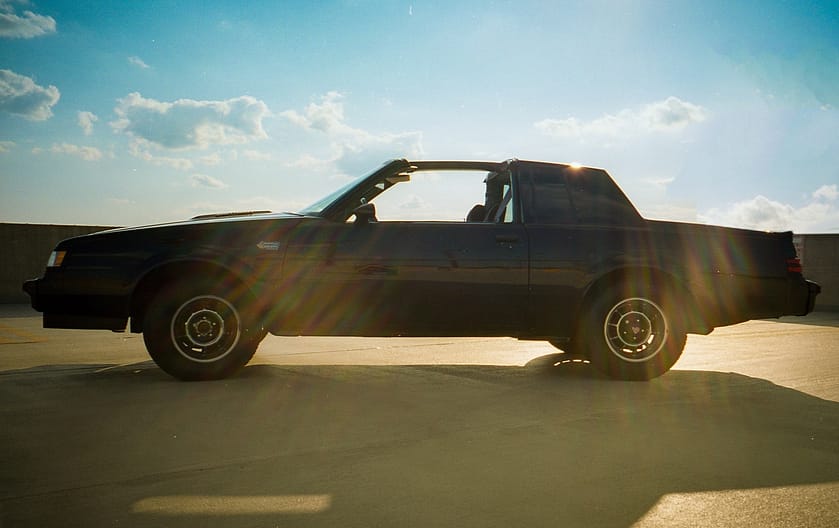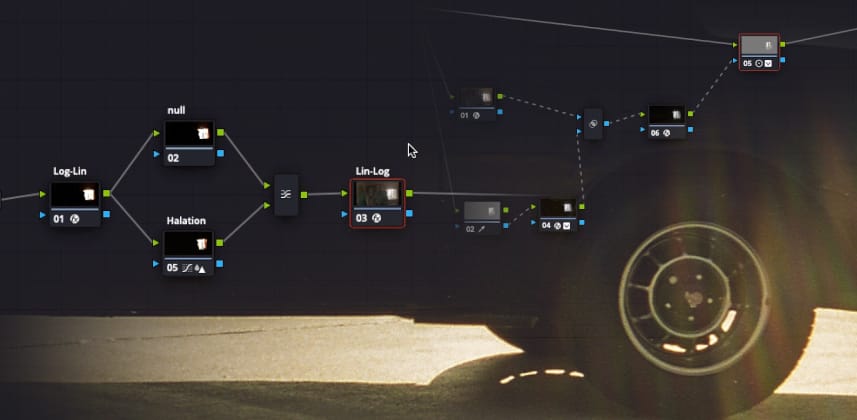| Series |
|---|
Day 2: 24 Insights In 24 Days – 2020 New Year Marathon!
Elements of a “Film Look”
When people talk about the “look” of film in the context of color grading, it means many different things to many different people. There is no one “film look” – and people’s tastes and styles vary widely. Some refer to the color characteristics of particular print stocks. Others think of grain. Some see it as a soft roll-off in the highlights and shadows.
Photochemical film has many different properties that are different then digital acquisition methods and for creative looks, colorists are often asked to emulate some or all of them in grades.
In this Insight – I’m going to talk specifically about one aspect unique to film: Halation.
What Is Halation?
Halation is a reddish glow around high contrast edges. In photochemical film, it is caused by light passing through all the layers of film, but the brightest areas bouncing off the back of the film or camera body and into the lower layers of emulsion. Most modern film stocks feature an anti-halation backing, which absorbs most light – but it isn’t perfect and halation still happens.

Various film stocks have different types of construction but in most motion picture films, light bouncing back hits the red layers, so halation has a bit of red/yellow-ish tint.
Why Emulate A Defect?
At it’s core – halation is a defect in film acquisition. This is why most film stocks have backings to reduce it. However, like many things in filmmaking – it can be a bit of a happy accident. A lot of people (myself included) think it looks beautiful! This is entirely subjective, but I love the little bit of bleeding around bright edges. I feel like it gives the image a bit of personality that helps make high contrast areas of transition more visually impactful.
Two totally different techniques
When a member reached out to us asking how to emulate film halation, Dan and I immediately started discussing it as we both love a lot of the imperfections of film. As we compared our methods, we found that we were using totally different approaches. Each yields good results, and in this Insight I’ll walk you through both our techniques so you can decide what is best to use on your projects.
UPDATE: The first technique came from a powergrade that Dan had sent me, and has been using in his projects. We didn’t know the original source of the technique, but after publishing a member pointed us to this thread on Lift Gamma Gain where colorist Matthias Tomasi explains it in more detail. Thanks to Matthias for this great method!
For our Premium members, I’m also including a downloadable PowerGrade of my method for you to use as a starting point.
-Joey
Member Content
Sorry... the rest of this content is for members only. You'll need to login or Join Now to continue (we hope you do!).
Need more information about our memberships? Click to learn more.
Membership optionsMember Login
Additional Downloads
Sorry... downloads are available for Premium Members only.
Become a Premium Member

